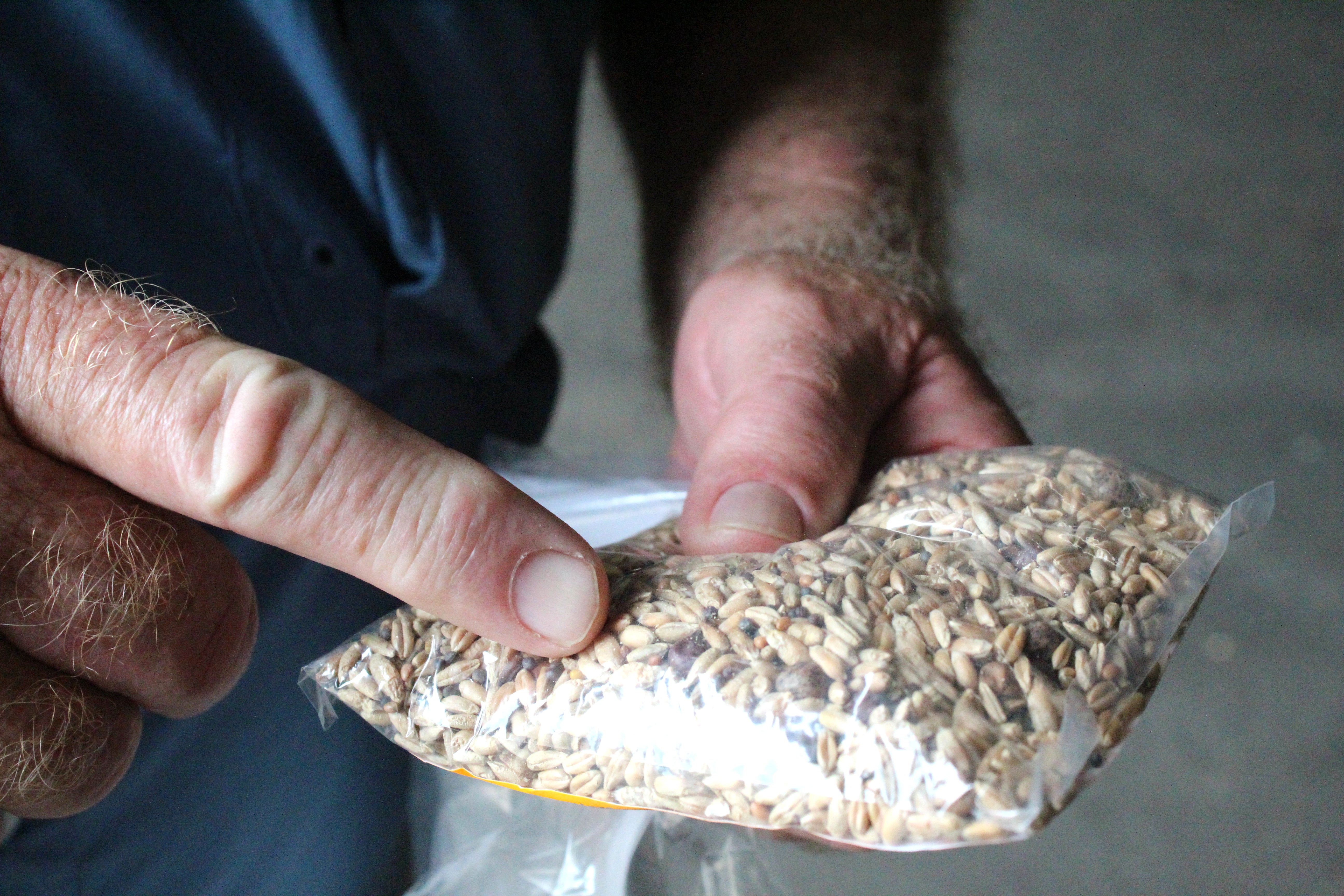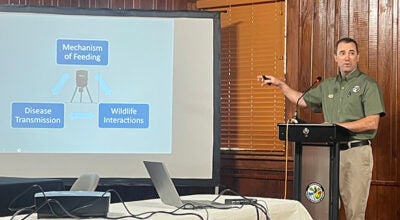Food plots give deer a food source in late summer
Published 6:59 pm Friday, May 21, 2021

- Buck Busters Seed Company owner Ricky Smith holds a bag of seeds he uses in his fall and winter food plots. Planting food plots for the summer time is important but takes a lot of work to fight weeds, he said. (Hunter Cloud The Natchez Democrat)
|
Getting your Trinity Audio player ready...
|
Deer herd management in May is a lot like the management used in cattle. You have to deworm them to have a healthy herd, Sports Center Manager Tim Mize said.
He said you deworm deer by using a mixture of 1 tablespoon of Ivomec for every two pints of water and spraying it on a 50-pound bag of feed. He said this time of year, you should be putting out feed made up of 24-27 percent protein.
Deworming deer herds help deer this season and deer of future seasons. Healthier does produce more milk for their younglings, and the herds will get healthier, he said.
“Anything that eats from the ground is going to have worms,” Mize said. “(Dewormer) helps on your does when they drop their young ones, that is when you are going to see the most with dewormers. It will help bucks with their digestive system. Everything a worm hurts on an animal, it does the same with deer as well. Same thing (dewormers) does for your cattle, (dewormers) does for your deer.”
Mize said he puts out deworm feed for deer every two weeks in a month as one would do with cattle. Feed high in protein provides the nutrients needed for deer to grow healthy muscles and bigger antlers.
Natural growing protein will come from beans, clover and peas. Beans provide proteins for deer and put nutrients back into the ground for fall and winter food plots. Buck Busters Seed Company owner Ricky Smith said the most crucial time for supplemental feed for deer is in July and August.
“Everything is green, but everything is very woody. The protein and the nutrition go down even on your herbs,” Smith said. “Your arrowleaf clover and chicory will do great in the summertime, especially in July and August. That is when you need something in your food plot to grow. It looks like there would be plenty for a deer to eat in July or August, but they don’t.”
Smith said he plants his mixes of seed in the early fall, typically in October. He does this so their root system can establish for the summertime. Mize said you can plant soybeans or any other legumes in May.
Before you start planting, Smith said he recommends submitting soil samples to your county agent so they can give you recommendations on what to plant.
Planting food plots begin with the breaking up of soil. After breaking up the dirt, spraying a weed killer such as roundup would eliminate competition for moisture and nutrients needed to raise a healthy food plot.
“Summer food plots are hard to establish because you have to fight the weeds,” Smith said. “Whatever seed you use, make sure it is herbicide compatible. You can buy roundup-ready soybeans from the co-op, so you can use roundup.
After two to three weeks, you can go back and plant the seeds at a depth of one to one and a half inches in the soil. Mize said to make sure the seed is covered by soil.
If the seeds are not planted deep enough and covered, dry wind could suck up the moisture from the soil. Seeds that germinate in dry soil will dry up and die. He said May to mid-June is the crunch time to plant those food plots.
To select a location for a food plot, you first need enough sunlight. Mize said the minimum sunlight should be about four to five hours. Food plots should also be planted in an area that drains well, close to a water source and bedding areas. Those bedding areas are typically in thick cover.
“You always want a water source close by,” Mize said. “Find out where your deer’s spring and summer bedding area is. That is where you want your food plot. As close to that bedding area without disturbing it.”





